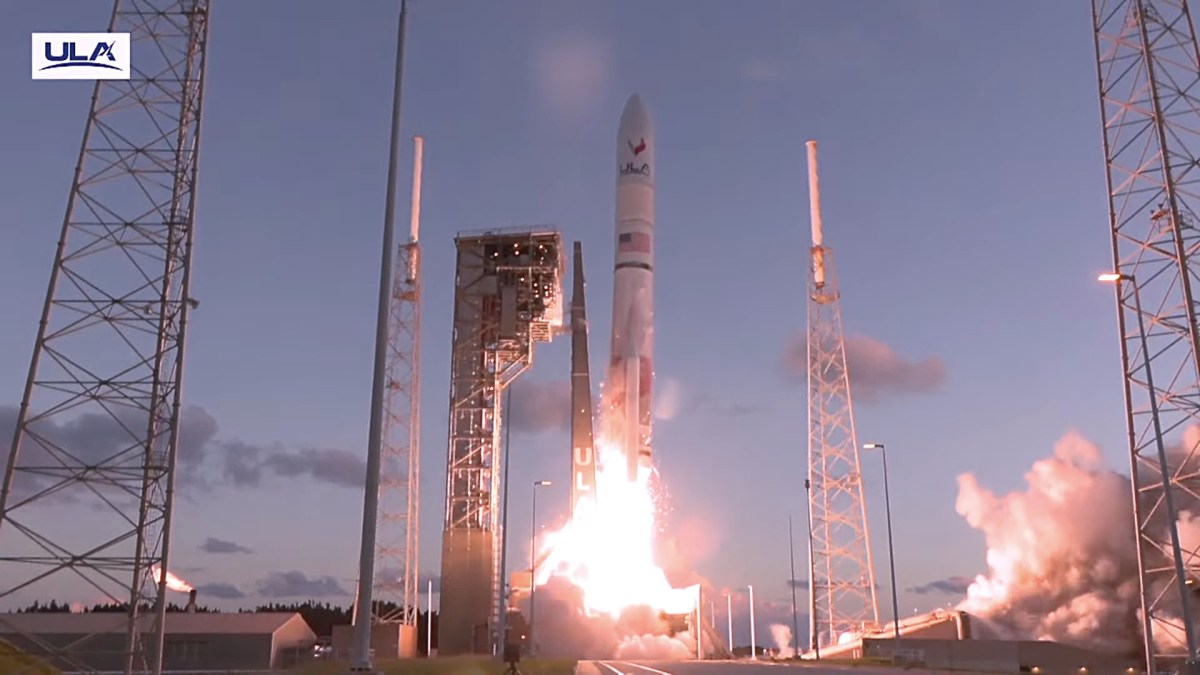WASHINGTON — United Launch Alliance’s second Vulcan Centaur lifted off Oct. 4 on a test flight needed to certify the vehicle for carrying national security payloads, but may have suffered a problem with one of its solid rocket boosters.
The Vulcan Centaur lifted off at 7:25 a.m. Eastern from Space Launch Complex 41 at Cape Canaveral Space Force Station in Florida. The liftoff took place near the middle of a three-hour launch window after an initial half-hour delay to provide additional time for pre-launch checks.
The first countdown attempt was halted 1 minute and 51 seconds before liftoff. Tory Bruno, chief executive of ULA, said on social media that a “transient on a redundant data system” triggered the hold, and controllers resolved the issue and reset the countdown for the second attempt, which resulted in liftoff.
ULA said that the vehicle’s performance was nominal in the early stages of flight. However, the separation of the two GEM 63XL solid rocket boosters (SRB) took place nearly 30 seconds later than the timeline the company provided before launch. About 35 seconds after liftoff, there appeared to be material coming off one of the boosters, whose plume changed appearance, suggesting damage to the SRB’s nozzle.
Material came off one of the two solid rocket boosters on the Vulcan Centaur about 35 seconds after liftoff. Credit: ULA webcastULA did not mention the incident during the ascent, but the timing of subsequent events, including separation of the booster and the shutdown of the Centaur upper stage’s engines after an initial burn, were behind the timeline by up to 20 seconds.
The Centaur completed its second burn about 35 minutes after liftoff, which concluded the main phase of the flight. ULA planned to continue operations of the stage for some time after that to perform experiments with the Centaur.
“We did have an observation on SRB number one, and so we will be off looking into that after the mission is complete,” Bruno said on the launch webcast after the completion of the second Centaur burn. “Other than that, the flight was nominal.”
The Cert-2 mission was effectively a test flight for the Vulcan, carrying only a mass simulator as well as instrumentation. ULA originally planned to launch Sierra Space’s Dream Chaser spaceplane on this flight but replaced it with an inert payload in June when Sierra Space said Dream Chaser would not be ready in time for a fall launch.
ULA wanted to launch Vulcan as soon as September — a date that later slipped to early October — so that it could gain Space Force certification of the vehicle and conduct two national security missions, USSF-106 and USSF-87, before the end of the year.
At an Oct. 2 briefing about the Cert-2 mission, Bruno said he was confident that the launch would go well based on the vehicle’s performance on the Cert-1 launch in January and win certification. That certification process, if all goes well, could be completed in weeks, although the anomaly with the solid rocket booster could delay that.
“I am supremely confident, having had a very clean Cert-1 mission,” he said when asked about the confidence of winning certification. That earlier launch “was the cleanest first launch I’ve ever had” of three dozen systems he has worked on in his career. “So, as I come up on Cert-2. I’m pretty darn confident I’m going to have a good day on Friday, knock on wood.”
